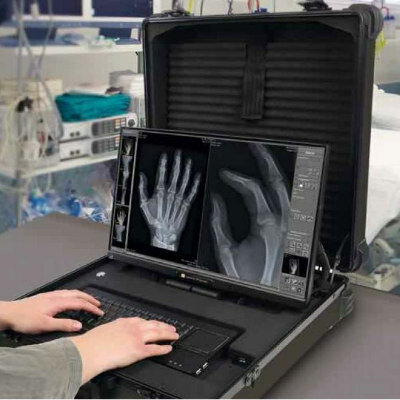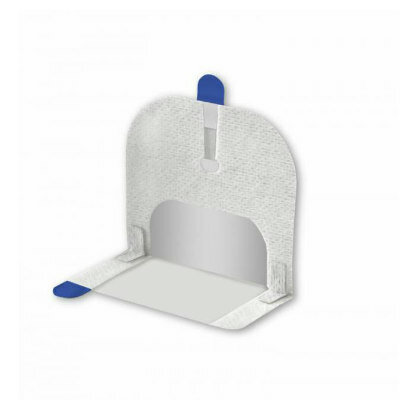MRI Screening Scanning Unnecessary for Many Back Pain Patients
By MedImaging International staff writers
Posted on 27 Dec 2011
New findings suggest that routine magnetic resonance imaging (MRI) does nothing to improve the treatment of patients who need injections of steroids into their spinal columns to relieve pain. Moreover, MRI plays only a small role in a physician’s decision to administer these epidural steroid injections (ESIs), the most common procedure performed at pain clinics in the United States.Posted on 27 Dec 2011
With greater focus on exploding healthcare costs, the study’s findings, published online December 2011 in the journal Archives of Internal Medicine, highlight one element of the problem: the indiscriminate use of an expensive imaging tool that reveals little clinical benefit.
“Our results suggest that MRI is unlikely to avert a procedure, diminish complications or improve outcomes,” said study leader Steven P. Cohen, MD, an associate professor of anesthesiology and critical care medicine at the Johns Hopkins University School of Medicine (Baltimore, MD, USA). “Considering how frequently these epidural injections are performed, not routinely ordering an MRI before giving one may save significant time and resources. If we’re trying to cut back on unnecessary medical costs, we should stop routinely doing MRIs on almost everyone who comes to us needing ESIs.” One MRI scanning session costs about USD 1,500.
The patients in Dr. Cohen’s study were all treated at one of several pain clinics in the United States for sciatica, a condition in which the roots of the sciatic nerve that branches out from the bottom of the spinal column is pinched or compressed, causing severe pain and tingling in the lower back that shoots down the leg. The most common treatment in the United States and worldwide is an epidural steroid injection, which places cortisone directly into the outermost part of the spinal canal in the lower back, delivering its anti-inflammatory benefits as close as possible to the source of pain.
Dr. Cohen and his colleagues treated 132 patients split into two groups. Both groups underwent MRI scanning, but the treating doctor only reviewed the films in one group. The first group received epidural steroids with the placement of the needle based only on a physical exam and how and where the patient described his or her pain. The clinicians who examined these patients did not review the MRI before giving the injections, but a physician not involved in the exams or treatments later did. In the second group, physicians determined treatment based on both an examination and imaging results, looking at the MRI to determine where to place the needle and whether to give an injection at all.
After three months, researchers reported no difference in how patients in both groups reported that they felt. In the group whose doctors did not see the MRI scan, 23 (35%) reported “overall success” after three months. In the group whose physicians saw the MRI findings before administering an injection, 24 (41%) reported a positive outcome.
In the first group, whose doctors were not aware of the MRI results, the independent evaluator agreed with the treating doctor in 66% of patients. In 18 of the other 22 cases, the independent evaluator believed an ESI was needed, only in a different location along the bottom of the spine. Dr. Cohen stated that this discrepancy probably did not alter the outcome because research has revealed that the steroid medication reaches across many levels as long as it is injected in the general vicinity. In every case, the physician elected for some type of injection.
In the second group, the treating physician who had the benefit of assessing the MRI findings decided not to perform an epidural steroid injection in only five cases, nevertheless, only to have three of those patients get an ESI within the following six months.
Overall, according to Dr. Cohen, the treatment scarcely varied whether or not MRI was used to guide decision-making. He noted that part of the difficulty in using MRI scanning to diagnose lower back pain is that there is not a good correlation between abnormal findings and symptoms. “If you look at 100 middle-aged people who have never had back pain, two-thirds of them would have abnormalities on MRI,” he stated. “This makes it difficult to use imaging to guide injections.”
People who complain about back and leg pain but have a normal finding on an MRI scan and who go on to get an ESI nevertheless may not get relief because the pain may have originated somewhere other than the spine. Patients with abnormal MRI scans who get ESI also may not receive benefit because their abnormal findings have nothing to do with their pain. In these instances, the abnormal findings are what physicians term a “red herring.”
On the whole, Dr. Cohen emphasized, ESIs are not a magic bullet. Many studies affirm that they provide only short-term benefit to only a subset of people who get them.
Related Links:
Johns Hopkins University School of Medicine













